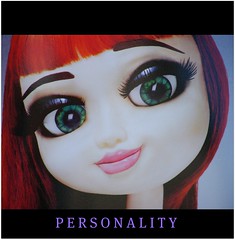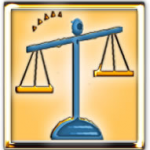
This is the third of a four-part series on conflict analysis looking at the four causes of conflict in the workplace. Part 1, different information, looked at the conflict when two or more parties have different information. Part 2, different interests, looked at the conflicts arising when each party wants something different or wants a different outcome.
The third root of conflict is the clash of different personalities and personal styles.
I have two colleagues with completely different communication styles. Rita is very ordered and detail oriented and likes everything to be in writing. Mick is more spontaneous and tends to communicate verbally – often catching people on the fly do to so. Not surprisingly Rita and Mick (not their real names) often miss each other in their communication. Mick might say something to Rita while they pass each other at the coffee station. From Mick’s perspective it is important information. But Rita is switched off, relaxing while she makes her coffee so it doesn’t register. Or Rita will spend time crafting an email in which every word is carefully nuanced, thinking that the email conveys in great detail the important information she wants to give. But Mick, who only sits at his computer for an hour at the end of the day, skims the email along with all the others in his inbox and only takes in a fraction of what Rita wanted to communicate.
 We each have different personalities and styles. This has long been recognized. The ancient Greeks recognised four ‘temperaments’ – sanguine, choleric, melancholic and phlegmatic. In ancient Chinese culture, as expressed in the I Ching, there are five elements: wood, fire, earth, metal and water, each have a corresponding character.
We each have different personalities and styles. This has long been recognized. The ancient Greeks recognised four ‘temperaments’ – sanguine, choleric, melancholic and phlegmatic. In ancient Chinese culture, as expressed in the I Ching, there are five elements: wood, fire, earth, metal and water, each have a corresponding character.
The pioneering Swiss psychologist Carl Jung read a translation of the I Ching in 1924 by his friend Richard Wilhelm and was immediately taken by it. He drew on this extensively, as well as the four temperaments, in his theory of personality. Many of the personality profiling
tools in use today, including DISC profiles, Myers-Briggs, and the Kiersey Temperament Sorter, draw on Jung’s work. Another popular tool, the Enneagram, also has ancient roots in the Sufi tradition. Each of these tools has its particular strengths and focus and there is much overlap between them all.
More recently another profiling tool, Talent Dynamics, has been developed by Roger Hamilton, drawing directly on the I Ching as well as Jung’s work. This is particularly useful for looking at roles within organisations and how individuals and teams can get into the peak performance state known as ‘flow’.
Different personalities can lead to conflict when we expect other people to behave in the same way that we behave. For example, Tom likes to think of himself as a relaxed tolerant person who doesn’t stress if someone arrives late. But if he is late for a meeting with someone who values punctuality, that can cause friction. Some people are good at starting things but not good at finishing. This can be very frustrating to tidy and detail oriented people who like to finish things by ticking all the boxes, crossing all the ‘t’s and dotting the ‘i’s. Last-minute merchants can upset people who like to carefully plan ahead. Risk-takers scare the hell out of more cautious types. People whose lives revolve around relationships and the fascinating lives of other people seldom see eye to eye with people who are task and goal oriented.
All of us tend to use ourselves as our frame of reference. We know how we would behave in a situation and we expect other people to behave the same way. When they don’t, we often attach a judgement to that. Either our way is the ‘right way’ and theirs is wrong. Or else their way is right – in which case ours must be the ‘wrong way’. Because nobody likes to be wrong, we usually choose to label the other person’s behaviour as wrong instead – whether we voice that judgement or not.
This mental labelling of our own behaviour as ‘right’ and other’s behaviour as ‘wrong’ inevitably leads to conflict – even when it is unconscious and unspoken.
Where genuine moral issues are involved – such as dishonesty, selfishness or inappropriate sexual behaviour, it may be important to have that conflict and confront the behaviour that is genuinely wrong.
But where the issues are not really moral issues, but results of different personal styles and characters, conflict is best avoided by widening our horizons and accepting that other ways of doing things are equally valid.
Learning more about ourselves by discovering our personality profile, through one of the various tests available, is a great way to do this.
Read the last in this series on the four causes of conflict in the workplace here >>:
These articles have been compiled into a free ebook, with an additional conflict analysis questionaire at the end to help assess the different components of any conflict. If you would like to download a copy, just fill in your name and email address in the form here, and it will be emailed to you. Click here to access the ebook
Mike Lowe
Helping individuals and teams get into flow





